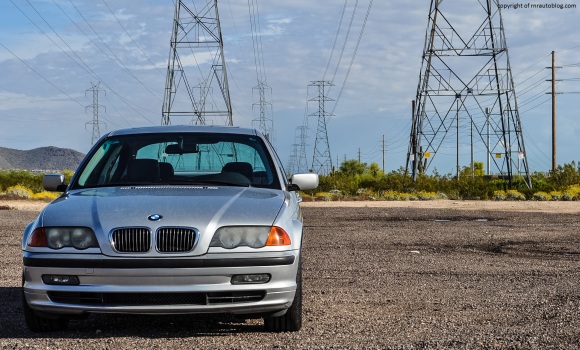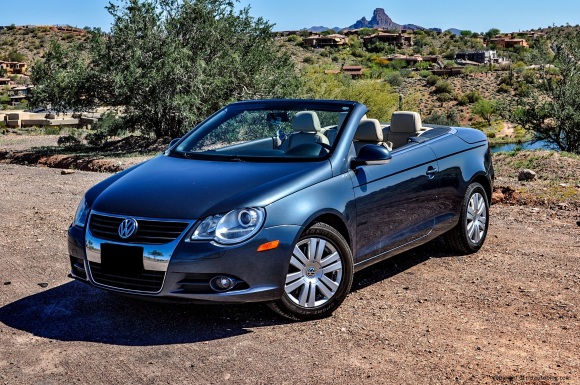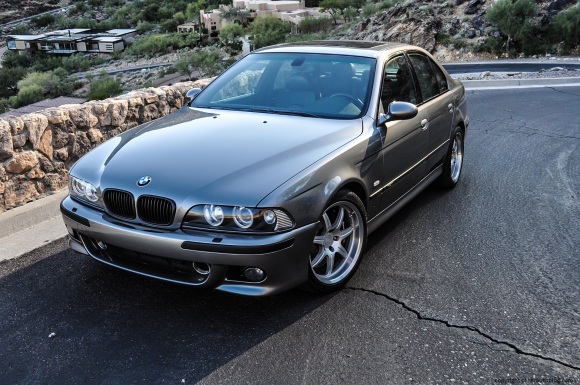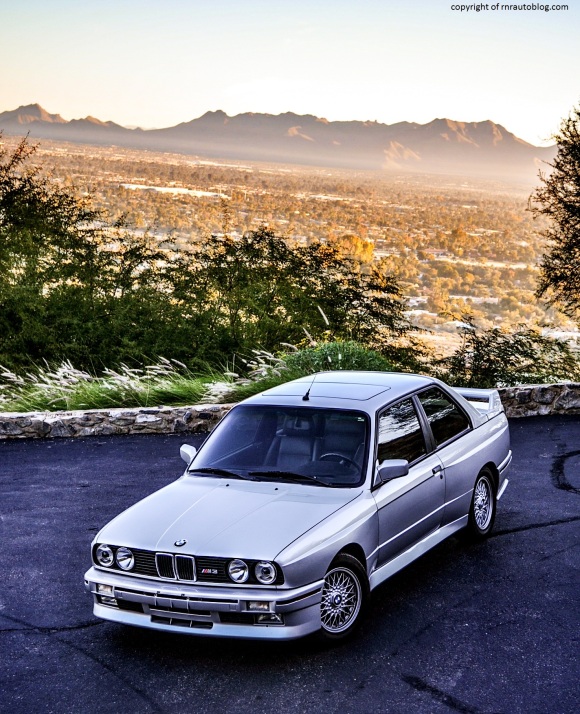Before this review, the 2012 Nissan GT-R that I reviewed had the most horsepower of any car I have reviewed. That is not the case anymore. Another car has claimed the title of having the most horsepower of any car that I have reviewed, and that is the 2013 Chevrolet ZL1. 580 horsepower mated to a six speed manual transmission. Before I get into the review itself, I should start with the expected introduction about what exactly is the ZL1 model and how it differentiates itself from other Camaros. Alongside the regular Camaro, the ZL1 originated in late 1960’s, 1969 to be exact. This is a little complicated, so do not take my word on the history of the ZL1. It is my understanding that the ZL1 came to fruition because Chevrolet dealers wanted bigger engines available for the Camaros. 69 models were made in 1969. Its exclusivity and performance made it a rare and coveted Camaro for car collectors (Do not take my word on the history of the ZL1). In 2012, the ZL1 was revitalized as a performance version of the Camaro. Even though I have already reviewed a Camaro, a SS version, I was keen on trying out the ZL1. As mentioned, the 580 horsepower engine makes for one memorable Camaro. The question is, is the ZL1 worth it? Continue reading
RNR Automotive Blog
Just another car guy talking about cars.
Category Archives: Manual Transmission Cars
2013 Ford Focus ST2 Review
Disclaimer: The interior pictures featured in this article are that of a 2015 Ford Focus ST, not the actual car that is depicted in this review. The 2015 version will appear later in a separate photo shoot article.
You might be asking yourself, “Is that a bright yellow Ford Focus I see? And why does it look like it came out of a Fast and Furious movie?” Ladies and gentlemen, allow me to introduce you to the Ford Focus ST. After reviewing a 2012 Focus sedan, I was impressed at how far Ford had come. With sharp styling, enjoyable handling, decent levels of equipment, I can see why the Ford Focus was a hit with the consumers. It all started when Ford finally consolidated its global models and started producing the same models for every market. Here in America, Ford previously concentrated its efforts on its sport utility vehicles and its trucks and neglected its passenger cars. Meanwhile in Europe, Ford’s lineup was of high quality and class-leading passenger cars. Europeans got a better Focus and Mondeo (European equivalent to Taurus/Fusion) than we Americans did. After the recession hit, Ford decided to combine its global portfolio and produce the same cars for every market. What this means is that we finally get the good cars that Europeans get which brings me to my point. In Europe, there is a very popular segment of hot hatches: sporty hatchbacks that deliver the thrills and performance of a sporty car while providing the versatility and comfort of a family hatchback. Ford did attempt this here in the U.S with the 2001-2004 Focus SVT, but as a two-door/four-door hatchback that was hard to live with on a daily basis, it never really caught the attention of most consumers except hardcore enthusiasts. There was also a 2004-2007 ST version of the sedan, but it was really a half-baked attempt to inject sportiness in the sedan when in reality it was just a top-of-the-line version with a manual transmission. Ford Europe introduced the first Focus ST in 2005, a sporty version of the Focus with 225 horsepower and a top speed of 152 mph. For the 2013 model year, a Focus ST version was added to the Focus lineup globally. Little backstory behind this car. This car is owned by one of my good friends, and we both are car enthusiasts as well as manual transmission aficionados. The owner named the ST, “Pikachu.” Let’s see if Pikachu is as exciting as its Tangerine Scream paint and rear spoiler suggests.
2015 Roush Mustang Stage 1 Review
Even though this is my 5th Mustang review, I am going to say again that this is not your typical Mustang. In fact, it is not just a Ford Mustang. Rather, it is a Roush Mustang. I should explain. Roush is a separate tuning division that specializes in Ford vehicles, namely Mustangs and F-150s. Jack Roush, a famous automotive figure in motorsports racing, worked as an engineer for Ford. Possessing a passion for hot rods and NASCAR as well as Mustangs, Roush sought to make a car that combined all three. In 1988, Roush presented Ford with the first Roush Mustang which featured a 400 horsepower twin turbo engine. Unfortunately, this car did not take off as costs of mass producing the Roush Mustang was too high for Ford. Roush started his own company, Roush Performance Products. Initially, it consisted of fitting aftermarket packages to Mustangs. The first actual Roush Mustang with the complete Roush package inside and out was born in 1998. Roush sought to narrow the gap between street and track, and as such the Roush Mustangs are fitted with performance and exterior modifications. This is not your ordinary Mustang. The objective behind the Roush Mustang was to give the Mustang the driving dynamics and looks of a racer. The Roush treatment has also been applied to the F-150 truck. As I mentioned earlier, this is my 5th Mustang review. However, I have not reviewed the latest Mustang which came out in 2015. The current third generation Roush Mustang comes in four flavors: RS, Stage 1 (RS1), Stage 2 (RS2), and Stage 3 (RS3). The Mustang in this review is the Stage 1, which comes with the turbo four. Don’t worry, I made sure it was a manual transmission! I was a bit nervous about testing the new Mustang as it looks like a completely different car inside and out. The latest Mustang is now a global car, so Ford developed the car in line with other markets’ preferences. What that does to the Mustang, I will have to find out. Continue reading
1999 BMW 328i Review
Just from judging from the title of this review, you guys are probably thinking that I have an obsession with the 3-Series. That can be justified considering that I have reviewed a 1990 M3, 1994 325i, 2001 330i, 2009 328i, 2010 328i, 2011 335i, and a 2013 328i, and now I can add the 1999 328i to the mix. What makes this car so special? Well for starters, it is a manual transmission model of the coveted E46 generation. I say coveted because to this day, many car enthusiasts still regard the E46 generation (1999-2005) as one of the finest 3 Series ever produced. As with most nameplates, the 3-Series grew in size and comfort with every iteration, but this E46 represents a fine balance of what the 3 Series used to be: handling and poise in a right-sized package. Now for the traditional history lesson, the 3-Series debuted during the oil crisis. Replacing the 2002, the first 3 Series, the E21 (1975-1981) generation, was sold only in a two door format as a coupe or convertible. Known for its memorable driving dynamics and perky engines combined with its tidy size, the E21 cemented BMW’s reputation as a maker of ultimate driving machines. Five generations succeeded the E21, and with the exception of the latest 3-Series, the successive generations have all upheld the BMW tradition of providing excellent handling and performance in a luxurious package. The generation in review is the E46 which debuted in the United States in 1999. Whereas the previous generation (E36) didn’t deliver the driving experience as expected of a BMW (but it still drove quite well), this generation set a new performance benchmark for its class. This was the car that made other luxury brands take notice, and it is not hard to see why. In 2002, more than 560,000 units were sold worldwide, an impressive achievement for a luxury car. Even though I have already reviewed a 330i some time ago, I wanted to try out the less powerful variant, a 328i, especially with the manual transmission. Continue reading
2012 Ford Mustang Boss 302 Review
If you think I do too many reviews of the fifth generation Mustang, you may be right. So far, I have done a 2012 Mustang V6, 2014 Mustang 5.0 GT, and a 2005 Mustang V6 (all manual transmission coupes of course.) Well, now I have an additional manual coupe to add to the list: the 2013 Mustang Boss 302. The history with the Mustang harks back to the 1960s, or more specifically 1964 when Lee Iocacca came up with the idea for a sporty and practical vehicle for the masses. Equipped in many body styles as well as numerous powertrain configurations to suit the American tastes, Mustang sales skyrocketed. In just 18 months after it debuted, the Mustang sold over a million units. For six generations, the Mustang has successfully cultivated its heritage while morphing into a household name. The Mustang also introduced several notable special editions such as the Shelby Mustangs, Bullitt, and the Boss 302. Due to the success of the first Mustang, Chevrolet scrambled to develop a worthy adversary which would become the Camaro. Boasting small and big box V8 engines, the Camaro proved its advantages over the Mustang which featured smaller engines. The original Boss 302 was Ford’s answer to the Camaro. The 302 name is derived from its 302 cubic inch engine. This car was developed in secret, so if anybody asked what car this was, the employees in charge of this car always referred to it as the “Boss’ car”, hence the Boss designation. It was also developed for a racing homologation series, hence the mechanical modifications. The first Boss 302 was sold in 1969-1970, and it was revived in 2012 with production ending in 2013. Think of the Boss 302 as a Mustang 5.0 liter V8 GT with mechanical and visual tweaks. If you want to go for a more extreme version, there was a Boss 302 Laguna Seca edition available. It featured more extreme suspension tweaks, the deletion of the rear seats for a brace to enhance structural rigidity, and it came in four colors with a red roof and red accents. With that said, as soon as the opportunity to review a Boss presented itself, I just knew I had to do it. Continue reading
2007 Volkswagen Eos Base Review
Whenever you think of a Volkswagen and a convertible in the same sentence, the association”chick car” comes to mind. Like for example, if you see a Volkswagen Beetle convertible on the street, you automatically assume that it is driven by a girl. Talk about sexism. Volkswagen’s second convertible offering (up till 2014), the Eos was also subject to the chick car syndrome. I wouldn’t drive a Volkswagen Beetle or an Eos but that’s not because of the stereotype. I just dislike convertibles in general. I also dislike Starbucks and Nutella, so I have pretty popular opinions. Right? Anyhoo, the Eos debuted in 2007 in North America, and it boasted a metal hardtop roof, earning it the title of the cheapest metal hardtop convertible on sale at the time. Right now, here we have a 2007 Volkswagen Eos. Considering its reputation as a chick car, you would assume that it is driven by a girl. You are right: it is driven by my first prom date. She was a cheerleader in high school, she is pretty, and I assume she likes shopping. So she fits the stereotypes of a girl who drives a chick car ( I am assuming). But there is one caveat. This Volkswagen Eos is a stick shift. That’s right, I converted my prom date to manual as she initially wanted an automatic for her first car. The stick shift is also the reason why I wanted to review an Eos even though I have already reviewed a 2012 Eos. With the automatic equipped refreshed Eos in mind, how does the pre refresh manual equipped Eos compare? Continue reading
2002 BMW M5 Dinan Edition Review
When I was little, I got my first car game to play on the computer, Need for Speed Hot Pursuit. Remember the Need For Speed series? How I miss the days of NFS Underground, Hot Pursuit, etc. In the Hot Pursuit game, one of the cars featured was an E39 M5 (BMW cars are classified by their generations so the 1996-2003 5 Series is the E39), and I became enamored with its power (in the game) and its styling. I never have and probably never will own a brand new luxury sedan, but if I had to go used, the only luxury sedans I would consider buying is the first generation Infiniti M or an E39 5 Series with a manual transmission. The first M vehicle for the 5 Series was the 1980 M535i although it was not badged as an actual M brand vehicle, but it came with performance and visual upgrades. The first actual M5 came with the second 5 Series generation (E28 1981-1988) in 1985-1988 which was only available with a manual transmission and sold in “Jet Black” color only. The next 5 Series generation (E34) brought along another M5 version that was sold from 1989-1995. The E28 and E34 were the last M5 models to be hand built before the E39 arrived. When the E39 M5 debuted in 1998, it took the world by storm. People raved about its 394 horsepower V8 engine, its butch looks, and its overall image as M’s flagship sports sedan. This M5 reviewed here is a Dinan edition; Dinan is a company that produces both mechanical and cosmetic aftermarket products for BMW vehicles. They also have a long standing relationship with BMW as Dinan modified BMWs are able to retain their factory warranties. Even though this is not the regular M5, I could not resist the opportunity to be able to review one of my favorite cars in the entire world. How desperate was I to review an E39 M5? So desperate that I saw this car in a parking lot and left a note on the windshield asking the owner if I can review the car. Fortunately the owner obliged. Continue reading
1990 BMW M3 Review
When I found out I would get the opportunity to review the first ever M3 ever produced, I was giddy with happiness and anxiety. Just to clarify how much of a coup this is, only 4,996 of these were sold in North America during its six year run. BMW’s M (called Motorsport GmbH then) was created in 1975 to aid BMW’s presence in motor racing in the 1960s-1970s. However, they started to add mechanical and cosmetic upgrades to BMW’s existing lineup to sell to the market. The first M-branded car launched was the 1979 M1, but BMW’s M division’s prominence did not emerge until they made an M version of the 5-series sedan, M535i, in 1979. The first actual separate M model debuted in 1985 for the M5, a version of the 5-Series. A M version of the E30 3-Series followed (BMW vehicles are classified by chassis numbers, so this generation is the E30) in 1986. Initially, the M3 was built to fulfill motor racing requirements. The World Touring Car Championship requires that the car be commercially produced in order for it to compete which is why the M3 was limited to just 5,000 units. However, the M3’s success was unprecedented, so production was expanded to almost 18,000 worldwide (including both convertible and coupe models). With the first M3 and M5, BMW and its M division cemented a reputation for itself in the automotive industry as a maker of the “ultimate driving machine” which was its slogan until recently. Sadly, as the luxury market has progressed in technology and power, BMW’s “M” cars have gotten a bit of an unflattering reputation. Once a division that pertained to strict principles of just manual transmissions, rear wheel drive, normally aspirated engines, the latest M cars are turbocharged, mostly automatics, and all wheel drive (at least for the SUVs and arriving soon for the M5). Not only that, and excuse my language, but the latest M cars have attracted a certain “douchebag” reputation. The general stereotype of the latest M cars is that they are driven by showoffs who could care less about the performance and handling capabilities and are focused on the cachet the M brand brings. However, this stereotype only pertains to the M cars manufactured around 5 years ago. This M3 reviewed here is the very first showcase of the M brand’s pure driving philosophy, and I was giddy with excitement as I got to review this gem. Continue reading
2005 Ford Mustang V6 Premium Review
Do you ever believe in coincidences? Well guess what, I do. The owner of this car went to the high school I would have gone to had I not changed districts, and as it was unbelievable how well I knew his classmates (I attended the elementary school that preceded the high school). Not having spoken to many of those classmates for so long, the owner filled me in on them, and it was like reading a tabloid about my former classmates. Because of that, we started bonding and became great friends. If that is not a coincidence, I do not know what constitutes as one. Our friendship was made better because he informed me that he is a car fanatic, and he drives a manual car, a 2005 Ford Mustang V6 5 speed. The Ford Mustang was what one would call the starter of the “pony car.” Ford wanted to build a sporty but affordable and family friendly vehicle for the masses. The first Mustang debuted on April 17, 1964, and these Mustangs were regarded as the “1964 1/2 Mustang.” In its first year, it sold over 400,000 copies and sparked the muscle car era. Shortly after, Ford’s rivals Chevrolet and Dodge/Plymouth started getting in the action with the Camaro and the Challenger/Barracuda. The Mustang II, introduced in 1974-1978, was a disappointment compared to the first generation. No longer displaying svelte and crisp lines, the frumpy Ford Pinto-based (Ford Pinto was an economy hatchback) Mustang II was slow and featured ordinary styling. Due to the oil crisis of the 1970s, the Mustang II was fitted with fuel efficient but slow engines. However, the Mustang soldiered on till the fifth generation in which the most significant Mustang since the original debuted in 2005 model year. This generation’s design would borrow heavily from the original Mustang as well as be completely redesigned in and out. I had the pleasure of driving a 2011 V6 and 2014 5.0 GT, but since those were refreshed models of this generation, I thought it would be cool to review a pre-refreshed Mustang, with a manual transmission of course. Continue reading
2011 Mazda3 S Grand Touring Review
I never understood why Americans are against hatchbacks. My family and I travel often to other countries, and in Asia and Europe, hatchbacks are the norm. Even in Australia and New Zealand, hatchbacks generally sell more than sedans. So why does America have an adverse reaction to hatchbacks? I have no clue. One time, in a store parking lot. I pointed out a nice Audi A3 hatchback, and I said to my sister, “Look at that A3, isn’t that a sweet ride?” Her reply? “Ew. It’s a hatchback.” I am baffled. Logic dictates that we should prefer hatchbacks over sedans because they provide better cargo space and more versatility and in some cases, they tend to look better than their sedan counterparts. Such is the case with the second generation Mazda3. Replacing the Protege (called the Familia overseas), the 2004 Mazda3 was the start of a new era for Mazda. No longer a company of humdrum and ordinary vehicles, Mazda placed emphasis on sporty driving experiences and styling which started with the first 3. The first generation Mazda3 was a blistering success, and it was the car that pulled Mazda out of obscurity. It was renowned for its blend of enjoyable handling, quick performance, excellent fuel economy, and its design. I reviewed two first generation 3s, the high performance hatchback, Mazdaspeed3 and a sedan. I was impressed as they provided the driving experience of a BMW but for half the price. In 2009, the second generation debuted as a 2010 model. I also had the opportunity to review one, but it was an automatic transmission sedan. However, this car is a hatchback with a manual transmission. Which begs the question; would I like the hatchback configuration better than the sedan? Continue reading









